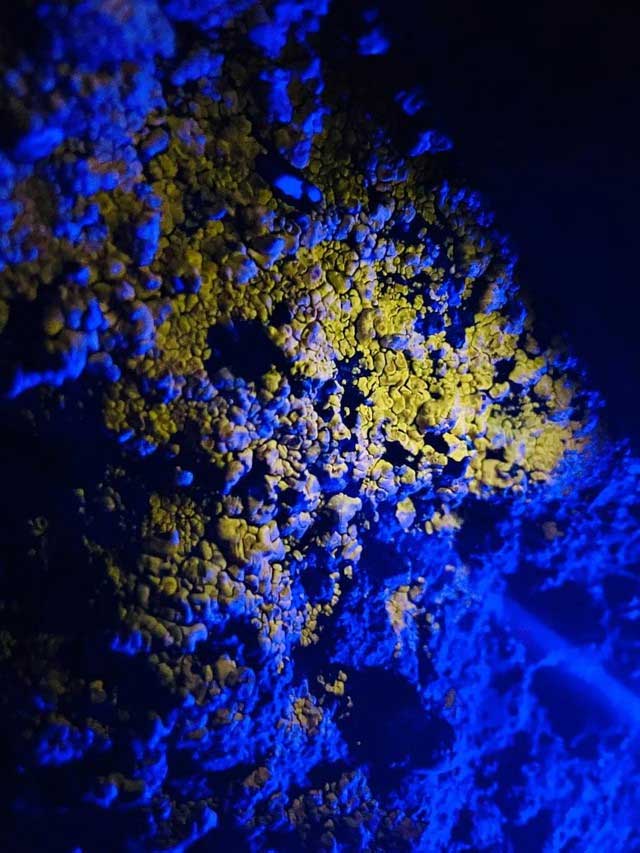According to scientists, this creature can live on Mars.
Research at Mars analog sites in Utah and Nunavut focuses on lichen diversity, helping to predict the existence of lichens on Mars and supporting our understanding of these organisms both on Earth and potentially in space.
Lichens , incredibly resilient organisms, can survive on a wide range of surfaces, from rocks and trees to bare soil and buildings. Thanks to a partnership between fungi and photosynthetic organisms, lichens have become a unified whole, found on every continent and virtually every landmass on the planet. Some lichen species have even survived exposure to harsh environments outside the International Space Station (ISS).
The hardiness and survival abilities of lichens have attracted the attention of researchers, particularly astrobiologists who are studying the possibility of life on Mars. The deserts near two North American Mars-simulating research stations – the Mars Desert Research Station in Utah, USA, and the Flashline Mars Arctic Research Station in Nunavut, Canada – have become living laboratories for scientists to explore and inventory local biodiversity through simulated missions to the red planet.

Lichens are incredibly resilient organisms.
Both stations, operated by the Mars Society, are designed to simulate Mars habitats. There, crews will participate in spacesuit exercises to study how to live and work on Mars. The 'astronauts' will not only explore the desert environment, but also develop and test methods for recording microbial biosignatures – a step toward deploying them on real space missions.
In 2016 and 2017, during the Mars 160 mission series – which included parallel operations at both stations – the team conducted a lichen biodiversity survey . They collected lichen samples from a variety of microenvironments for further study and analysis.
During the surveys outside the rover, members of the Mars 160 mission wore simulated spacesuits and searched for lichens in desert environments. More than 150 specimens were collected and 'returned to Earth' for analysis at the National Herbarium of Canada at the Canadian Museum of Nature. There, scientists used morphological, anatomical, internal chemical and DNA barcoding to specifically identify lichen species.
The study identified 35 lichen species from the Mars Desert Research Station in Utah and 13 species from the Arctic Research Station in Nunavut. These findings not only provide new insights into the unique ecosystems of the two deserts, but also contribute to building a valuable database for astrobiology and lichenology research.

Lichens can live in harsh environmental conditions.
The study, published in the journal Check List, includes detailed information on the lichen species, photographs and identification characteristics, and will be a useful reference for future crews working at the two research stations. In addition, it will help Earth scientists better understand the distribution and biology of lichens – including rare or newly discovered species.
By discovering resilient organisms like lichens in extreme conditions, scientists are not only expanding their understanding of life on Earth but also laying the groundwork for the search for life in outer space, especially on neighboring planet Mars.
- Selected 100 people to Mars, live and do not return
- Here's how humans live on Mars: Growing vegetables in a cellar and ... chewing on live insects
- 'That' on Mars will be dangerous, but it can create new subspecies of humans
- More than 1000 people volunteered to live Mars
- How long do people live when wearing jeans on T-shirts on Mars
- Living on the Moon or Mars better? Science has got the answer!
- List of terrible things when living on Mars
- NASA is looking for 4 people to live in an environment like Mars, with pay
- Live in Mars to challenge yourself
- Humans can only survive 68 days on Mars
- Why are people so hard to live on the Moon and Mars?
- UAE's future Mars City on Earth
 Announced 3 houses on the Moon and Mars
Announced 3 houses on the Moon and Mars Science proves: Mars also knows 'deflated'
Science proves: Mars also knows 'deflated' Elon Musk announced the price for a Mars trip was 11.6 billion VND, free of charge
Elon Musk announced the price for a Mars trip was 11.6 billion VND, free of charge NASA discovered strange 'gate' on Mars, is the hiding place found?
NASA discovered strange 'gate' on Mars, is the hiding place found? Revealing the first city on Mars, with enough space for more than 250,000 people to live
Revealing the first city on Mars, with enough space for more than 250,000 people to live  We could start building a colony on Mars with just 22 people!
We could start building a colony on Mars with just 22 people!  Amazing discovery of 4.5 billion year old alien ocean of life
Amazing discovery of 4.5 billion year old alien ocean of life  Mars' Surprising Effect on Earth's Oceans
Mars' Surprising Effect on Earth's Oceans  Was there nuclear war in ancient times?
Was there nuclear war in ancient times?  What happens to dead bodies on Mars?
What happens to dead bodies on Mars? 